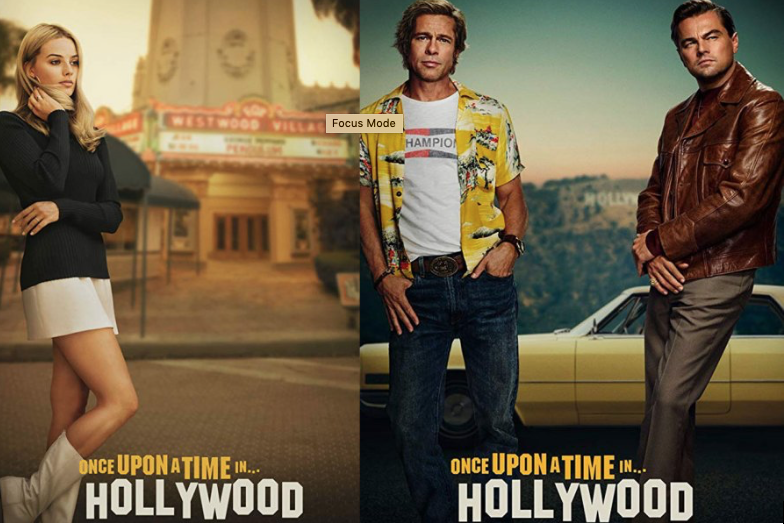CommentsBCK FILE--Cinematic auteurs at times use their vision to pay homage to a city. Certainly, the City of Angels, in large part due to its status as the Hollywood hometown, has played a starring role in numerous films. Last year, David Fear, Stephen Garrett, Tim Lowery, Joshua Rothkopf, and Keith Uhlich shared an expansive list of 57 films that the critics considered the “Best Los Angeles movies of all time.”
The list spans genres, including film noir, comedies, sci fi, and is a cinematic journey through the history of Los Angeles, as well as the city’s unique position as a company town. This is a city of dreams -- and those dreams oftentimes end in tragedy or at least, heartbreak.
Quentin Tarantino’s Once Upon a Time in Hollywood is a meticulously recreated paean to a city in transition. From the presence of KHJ radio, spotlessly recreated interior shots of Musso & Frank’s, El Coyote, and the valley’s Casa Vega, Tarantino and production designer Barbara Ling left no stone unturned.
The film takes place in 1969 during a seminal few months that capped the non-conformist youthquake culture. Leonardo DiCaprio’s Rick Dalton, a fifties TV western star, and his sidekick stunt double Cliff Booth, played by Brad Pitt, are anachronisms in this era of grit and counterculture.
As denizens of LA, it’s not uncommon to cross paths with “recognizable names,” or faces. The guy in the dental waiting room was a regular on a seventies soap. We’ve all heard musicians playing at Century City or the Grove who may have achieved stardom, had it been for a twist of fate.
 1969 was also framed by the Manson murders, which play a role in the film, as well. The city was gripped with fear after a hot August evening when pregnant actress Sharon Tate, hair stylist to the stars Jay Sebring, aspiring screenwriter Wolciech Frykowski, coffee heiress Abigail Folger, and an 18-year old visitor, Steven Parent, were brutally murdered at 10050 Cielo Drive in Benedict Canyon.
1969 was also framed by the Manson murders, which play a role in the film, as well. The city was gripped with fear after a hot August evening when pregnant actress Sharon Tate, hair stylist to the stars Jay Sebring, aspiring screenwriter Wolciech Frykowski, coffee heiress Abigail Folger, and an 18-year old visitor, Steven Parent, were brutally murdered at 10050 Cielo Drive in Benedict Canyon.
(Photo left: Manson.)
The murders were a wakeup call to many Angelenos who felt secure in their quasi-suburban neighborhoods. One night later, in Los Feliz, supermarket chain owner Leno LaBianca and his wife were brutally murdered. Eventually, it was uncovered that Tex Watson, Susan Atkins, Patricia Krenwinkel, Leslie Van Houten, all Manson family cult members, had committed the terrifying murders, under orders by Charles Manson, who was not present at the Tate murders but had tied up the La Biancas before directing his disciples to continue their rampage.
Charles Manson had a criminal past that spanned decades. In fact, one of his earlier arrests was for driving a stolen car to California. Like many, Manson had his touch with fame before going on to ignominy. The year before the murders, Dennis Wilson of the Beach Boys had introduced Manson to music producer/son of legend Doris Day, Terry Melcher. Manson and his “family” had been living in Wilson’s Sunset Boulevard home after the Beach Boy had picked up Patricia Kremwinkel and another Manson “family” member who were hitchhiking.
In 1968, The Beach Boys released a song written and composed by Charles Manson. The B-side to “Bluebirds Over the Mountain”, which was entitled “Never Learn Not to Love,” had started as “Cease to Exist,” written by Manson.
Melcher is said to have entertained recording Manson’s music and producing a film about the Manson “family” and their hippie commune lifestyle. Manson met Melcher at the 10500 Cielo Drive residence, where Melcher had been living with his girlfriend Candice Bergen and the musician Mark Lindsay. Melcher decided against signing Manson and after witnessing Manson in a fight with a drunken stuntman at Spahn Ranch, the site of the Manson compound, Melcher also abandoned the film project. Wilson and Melcher cut ties with Manson, which fueled his anger.
When Melcher moved out of the El Cielo residence, the house’s owner, Rudi Altobelli, leased it to director Roman Polanski and his wife, Sharon Tate. Although Melcher was convinced Manson targeted him for murder, Susan Atkins told police that the location was chosen to “instill fear in Terry Melcher because Terry had given us his word on a few things and never came through on them.”
Sharon Tate, who was perhaps best known for her role in Valley of the Dolls, became more notorious in death than in life. Once Upon a Time in Hollywood humanizes Tate, who had become a symbol for the murders.
Hollywood, and in a broader sense, Los Angeles, is the backdrop of dreams that may lead to meteoric rises to fame, but more frequently, brushes with fame and eventual plummets, an integral plot point in Tarantino’s latest film.
(Beth Cone Kramer is a professional writer living in the Los Angeles area. She covers Resistance Watch and other major issues for CityWatch.)
-cw
















